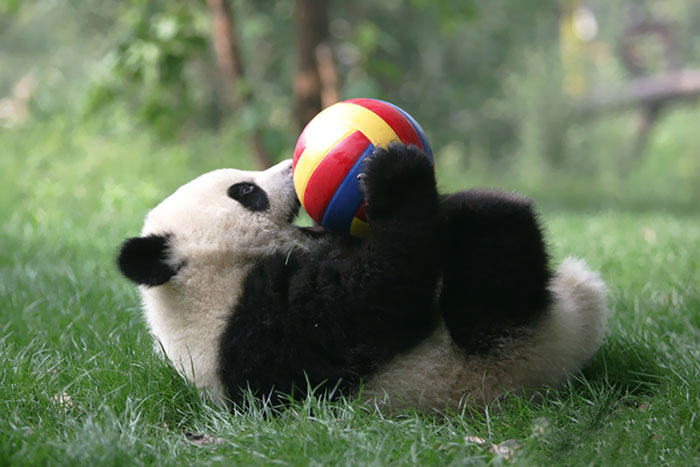The Chengdu Research Base in China seems like it just might be one of the cutest places on earth – and it’s vitally important for the survival of the endangered giant pandas that we all love so much, too. This panda “daycare” is actually a specialized breeding center and nursery that seeks to breed new pandas to revitalize the dwindling wild population, which may be as small as 1,864.
Each panda cub is special – not just because of how cute they are, but also because of how hard it is to get pandas to breed. Females are able to breed for only 2-3 days a year, and they only give birth to one cub every two years.
More info: panda.org.cn
476Kviews
Share on FacebookI'm dying :-). These photos are so adorable. I have been fortunate enough to travel to the Woolong Panda Research Centre in China a number of years back. The Centre is located very near their natural habitat in the wild. Watching young pandas play and being able to interact with one for a short time was one of my life's experiences that I will never forget. Young pandas are like happy little children, running around, climbing, play fighting, doing somersaults … I watched them for hours. The people there do amazing work. Unfortunately, there have not been very many successful releases back into the wild. These are truly amazing and wonderful animals and I hope that they will be around for the next generations to see.
I enjoyed your note about your trip. Thank you. Where is wild in China or anywhere? We are past that. Wilderness only means to humans that the land and resources "belong to no one" and are up for grabs. A better idea now might be the idea of garden. A panda garden. All wilderness should be re-designated as gardens. We have to get ourselves back to the garden in the words of a prophetic song. :)
Load More Replies...I was there couple years ago November through Earth Watch. Stayed there for a week and realised it is a program working inside the research centre. Yes I get to see these giant pandas for long hours. But it was mostly observing the older ones which were 2 to 5 year old. Most of these pandas are locked up behind bars, depressed or bored. Yes visiting the cubs inside the cage was the highlight but we don't get to touch them. The little ones you see in these photos were confined in a room most of the time. And the one year old cubs are able to move around and climb trees. But the fence of the enclosure were not high or far enough to prevent disturbance from the local tourists. I saw one Chinese kid yelling at the cubs seemingly want to attract their attention onto himself. There was an elderly woman who threw apple cores over the fence and let the cubs eat them. Sure but I'm worry those apples may be havily laced pesticides or herbicide due to commercial farming.
I'm dying :-). These photos are so adorable. I have been fortunate enough to travel to the Woolong Panda Research Centre in China a number of years back. The Centre is located very near their natural habitat in the wild. Watching young pandas play and being able to interact with one for a short time was one of my life's experiences that I will never forget. Young pandas are like happy little children, running around, climbing, play fighting, doing somersaults … I watched them for hours. The people there do amazing work. Unfortunately, there have not been very many successful releases back into the wild. These are truly amazing and wonderful animals and I hope that they will be around for the next generations to see.
I enjoyed your note about your trip. Thank you. Where is wild in China or anywhere? We are past that. Wilderness only means to humans that the land and resources "belong to no one" and are up for grabs. A better idea now might be the idea of garden. A panda garden. All wilderness should be re-designated as gardens. We have to get ourselves back to the garden in the words of a prophetic song. :)
Load More Replies...I was there couple years ago November through Earth Watch. Stayed there for a week and realised it is a program working inside the research centre. Yes I get to see these giant pandas for long hours. But it was mostly observing the older ones which were 2 to 5 year old. Most of these pandas are locked up behind bars, depressed or bored. Yes visiting the cubs inside the cage was the highlight but we don't get to touch them. The little ones you see in these photos were confined in a room most of the time. And the one year old cubs are able to move around and climb trees. But the fence of the enclosure were not high or far enough to prevent disturbance from the local tourists. I saw one Chinese kid yelling at the cubs seemingly want to attract their attention onto himself. There was an elderly woman who threw apple cores over the fence and let the cubs eat them. Sure but I'm worry those apples may be havily laced pesticides or herbicide due to commercial farming.

 Dark Mode
Dark Mode 

 No fees, cancel anytime
No fees, cancel anytime 




































































250
73